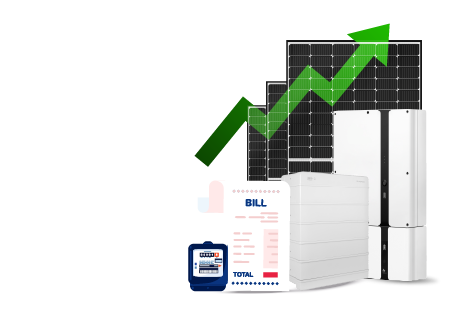Electricity Price Hike Again: How Solar Can Keep Your Energy Bills Low
HOME > Electricity Price Hike Again: How Solar Can Keep Your Energy Bills Low

Australian power prices are heading for a significant increase in 2025. The Australian Energy Regulator has released its Default Market Offer (DMO) for 2025–26, which acts as a pricing baseline for standing offer customers.
The price hikes stem from a combination of pressures: rising wholesale energy costs, increased network charges, and higher retail expenses due to ageing coal-fired generators and inflationary impacts.
This means electricity prices rising 2025 isn’t just a short-term blip, it reflects deeper shifts in Australia’s energy landscape.
The Default Market Offer is a government-mandated price ceiling for customers on standard energy contracts in NSW, SA, and SE Queensland.
It ensures bills don’t spike unfairly and provides a reference point for retailers and consumers alike. Though it doesn’t cap fees for customers on competitive offers, it provides valuable insight into rising electricity prices in 2025 and reinforces transparency in billing.
Switching to solar energy Australia is one of the most effective strategies to reduce power bills with solar. A well-sized solar system offsets daytime electricity use and allows you to sell back excess energy via feed-in-tariff credits.
Over time, this can shield you from unpredictable bill hikes tied to grid prices and wholesale energy cost inflation.
With forecasts pointing to persistent electricity prices rising 2025, more homeowners are investing in solar. It’s now the best time to install solar panels in Australia, as households aim to lock in energy self-sufficiency.
Solar for homeowners not only lowers monthly bills but also builds resilience against future rate increases and offers a smart, long-term investment in clean energy.
Take advantage of current incentives like the STC rebate, federal and state schemes offering upfront savings. These incentives are gradually phasing out, making 2025 the ideal window to act. Rebates can reduce installation costs significantly, making solar even more affordable and amplifying your electricity savings.
Skyrocketing electricity costs are a real concern, but there’s a proven solution. Installing a residential solar system through Solar Junction allows you to lock in predictable savings, secure feed-in-tariff credits, and shield your household from volatile energy markets.
With expert guidance, streamlined installations, and available rebates, Solar Junction makes it easy to implement solar and safeguard your household’s energy future.
As time-of-use tariffs become more common, homeowners are not just installing solar but also opting for solar battery storage. With a battery, you can store unused solar energy during the day and use it at night when grid rates are highest.
This strategy is especially effective during evening peaks when electricity prices spike. Not only does it provide home energy security, but it also future proofs your home against even more expensive tariffs expected in the next few years.
For those who experience frequent blackouts or want to go partially off-grid, pairing your residential solar system with a battery creates long-term independence. And thanks to rebates like the STC rebate, solar and battery packages are now more affordable than ever.
If you’re on the fence about switching to solar, it’s important to consider the hidden cost of delay. Choosing not to act now means continued exposure to electricity prices rising in 2025, reduced eligibility for rebates over time, and missing out on accumulating long-term savings.
Every quarter you delay is another inflated power bill paid to your energy retailer instead of being invested in your own rooftop system.
By acting now, you not only shield yourself from future price hikes but also increase the value of your home and improve your carbon footprint. In essence, not going solar is costing you more than you realize, both financially and environmentally.
Beyond reducing your reliance on the grid, solar energy systems allow you to earn money from the energy you don’t use.
Thanks to feed-in tariffs, any surplus electricity your system exports back to the grid earns you credits on your bill. These credits can significantly offset your nighttime or winter energy usage, helping to further reduce power bills with solar.

Yes, between rising tariffs and solar rebate scheme incentives, it’s an ideal time to act.
Most Australian households benefit from 6–10kW systems, which offset most daytime energy use and qualify for financial rebates.
While panel costs remain relatively stable, rising demand could marginally increase installation rates. Locking in quotes now can help.
